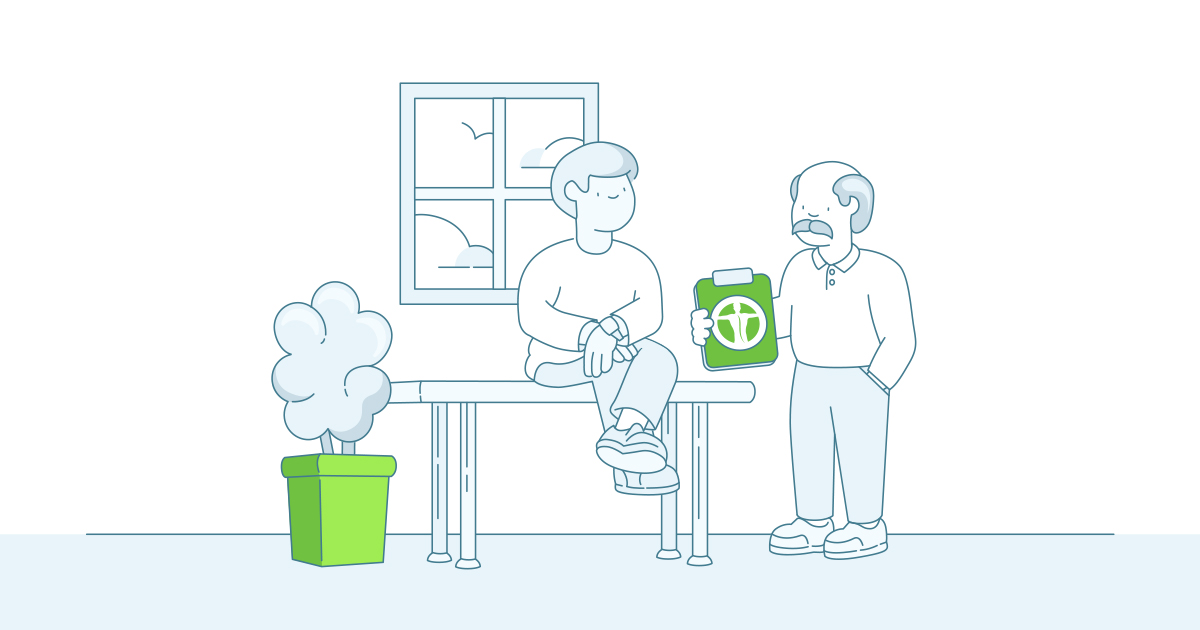Occurrence or Claims-made Malpractice Coverage
Learn how to choose the right policy type for you
June 2, 2022
Reading time: 6 minutes

Most chiropractors have absolutely no idea what their policy covers, with many finding out the hard way that they are not covered properly. Having a working understanding of the two policies is imperative.
— Dr. Steven Clarke, D.C.
There are two main policy types when it comes to malpractice insurance: Occurrence and Claims-made. Each has unique benefits, and it’s important to understand their differences so you can choose the best protection throughout your career and into retirement.
This article will help you understand the major features of each coverage type and some considerations to keep in mind when buying or renewing your malpractice insurance policy.
What is the difference between Occurrence and Claims-made coverage?
The major differences between the two coverage types are how long they protect you and how much they cost.
How long you’re protected:
- Occurrence coverage protects you for claims arising from incidents during the policy period, from the day you purchase the policy and beyond, even if you retire, take a leave of absence, or cancel the policy.
- Claims-made coverage only protects you during the year you have the policy, like health insurance. If a claim is made against you even just one day after your policy expires, you’ll have no coverage.
How much they cost:
- Occurrence coverage can be more expensive at first, but less expensive overall once the tail coverage from a Claims-made policy is factored in.
- Claims-made coverage can be inexpensive at first, then slowly ”matures” to a higher rate as your risk grows, until finally stabilizing. After you cancel the policy, you’ll need tail coverage for continued protection, which can be a significant cost. (Keep reading for more on tail coverage.)
See how your coverage works depending on your policy type:
So, what’s the cheapest malpractice policy for chiropractors?
There are a few factors to consider when evaluating the cost of your policy. Premiums are initially higher for an Occurrence policy. But since tail coverage for a Claims-made policy is expensive — sometimes twice the cost of your annual premium — you might actually save money with an Occurrence policy.
To compare costs over your whole career, you should get quotes for both Occurrence and Claims-made coverage. Read our article on the cost of malpractice insurance to learn more about pricing.
How do policy limits work across different coverage types?
The limits of your policy really matter, because they determine how much your liability insurance carrier may pay in the event of a claim. The policy limits are the maximum amount an insurer is willing to pay for claims filed against you.
Policy limits work differently depending on your coverage:
This is why policies are called what they are. For Claims-made, you’re covered by the policy limits that are in place when the claim is made (brought against you). So if someone files a claim against you now for an incident that happened in 2018, you would need to have a current Claims-made policy in order to have coverage.
For Occurrence, your policy from when the incident occurred covers you. So, if you had an Occurrence policy in 2018 (which never expires), and someone files a claim against you now for an incident that happened that year, the policy limits from 2018 will cover you.
Do you have better coverage with Occurrence or Claims-made?
Choosing between Occurrence or Claims-made might seem like an unnecessary complication—either way, you have the same policy limits to protect you, right? Not exactly. You’ll see a big difference if more than one claim is filed against you in a single year.
Say a claim is filed against you for something that happened this year and another claim is filed against you for something that happened in 2018. With Claims-made, only your current policy limits would cover you for both of these claims.
However, with Occurrence, since policy limits never expire, both your current policy limits and your 2018 policy limits would kick in to protect you. Your current limits would cover the current year’s claim and your 2018 limits would cover the 2018 claim. So, with Occurrence, you have greater coverage for incidents the longer you have that policy type.
Why isn’t Occurrence offered by every carrier?
Occurrence coverage has lots of benefits: it’s less complicated than Claims-made coverage (no need to think about tail), and it protects you for a longer period of time. However, not every insurer can offer Occurrence policies, since they carry greater financial risk for the insurer.
Simply put, the insurance company may not know its actual exposure under an Occurrence policy for many years. With Claims-made coverage, if no claims have been made against the policy by the end of the policy period, the insurer can count the premium as profit (net of expenses, of course) and move on to the next year.
You’ll want to find a company that offers you both Occurrence and Claims-made, so you have the flexibility to choose or even switch coverage types. ChiroPreferred—backed by MedPro Group—gives you access to both, and we can help you choose the best option for you.
What is tail coverage?
With a Claims-made policy, your protection ends at the end of the policy term. That means that if someone files a claim against you after you’ve retired or during a leave of absence, you will have no protection, even if you were covered when the incident happened.
For that reason, most people with Claims-made policies need to secure tail coverage to cover the ”tail” of liability left behind them after their policy ends. This is sometimes called an “extended reporting period” and tail insurance should give you coverage from the very first day of your policy (retroactive date) into retirement. Tail coverage typically protects you until death, but only gives you one set of limits to defend against claims. Tail is not necessary for an Occurrence policy, since the coverage never expires.
What if my insurer offers ”free” tail coverage?
Many insurance companies offer free tail coverage, which could make a Claims-made policy cheaper than an Occurrence policy. If this seems too good to be true, that’s because it may be. A lot of the time, insurers only provide tail coverage for free with these stipulations:
- The tail coverage will only be free once you fully retire
- You often need to be a certain age to retire and receive free tail coverage
- The tail coverage will only be free if you die or become disabled
Make sure you read the fine print before buying a Claims-made policy, so you don’t end up paying for tail coverage out of pocket.
Recap: Comparing Occurrence and Claims-made coverage
We’ve put together a short table so you can see the key differences between the two malpractice insurance coverage types. This should help you decide the best coverage type for you.
| Occurrence | Claims-made | |
|---|---|---|
| What’s the key difference? | Covers you for claims that occurred when you had the policy — no matter when it’s ”made” (brought against you) | Covers you only for claims that are made while you have the policy |
| How much does it cost? | Higher premiums, but can cost less overall because there’s no need to buy tail coverage | Lower premiums, but can cost more overall because you need to buy tail coverage |
| How long does coverage last? | Coverage never expires for claims arising from incidents during the policy period | Expires each year, and also expires when you fully cancel the policy |
| Can policy limits from previous years protect you? | Yes | No |
| Need tail coverage? | No | Yes |
| Offered by most insurers? | No | Yes |
Want to discuss your coverage options?
ChiroPreferred has always been committed to doing what’s best for chiropractors. That’s why we offer you Occurrence and Claims-made coverage options from MedPro Group—the only carrier on the market with the financial strength and long-term stability to continuously offer both policy types.
Contact us today to get a free quote or learn more.
Additional Coverage content

Understanding the Cost of Malpractice Insurance for Chiropractors
This article helps chiropractors understand the key factors that influence malpractice insurance costs and why selecting the right policy is…

Understanding Included Coverages and Why They Matter
Malpractice insurance policies typically cover a wide range of standard risks, but there are less common scenarios that require special…

The Anatomy of a Chiropractic Malpractice Policy
Understanding the parts of a chiropractic malpractice policy can help chiropractors make informed decisions about their insurance. This article breaks…
This document should not be construed as legal or medical advice and should not be construed as rules or establishing a standard of care. Because the facts applicable to your situation may vary, or the laws applicable in your jurisdiction may differ, please contact your attorney or other professional advisors if you have any questions related to your legal or medical obligations or rights, state or federal laws, contract interpretation, or other legal questions.
MedPro Group is the marketing name used to refer to the insurance operations of The Medical Protective Company, Princeton Insurance Company, PLICO, Inc. and MedPro RRG Risk Retention Group. All insurance products are underwritten and administered by these and other Berkshire Hathaway affiliates, including National Fire & Marine Insurance Company. Product availability is based upon business and/or regulatory approval and may differ among companies.
© MedPro Group Inc. All rights reserved.